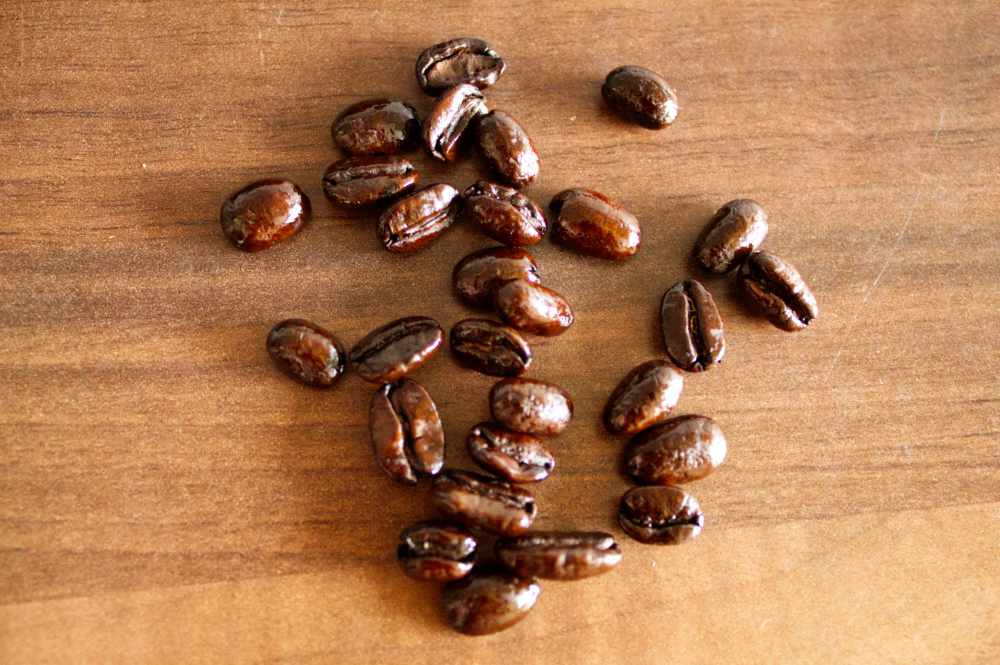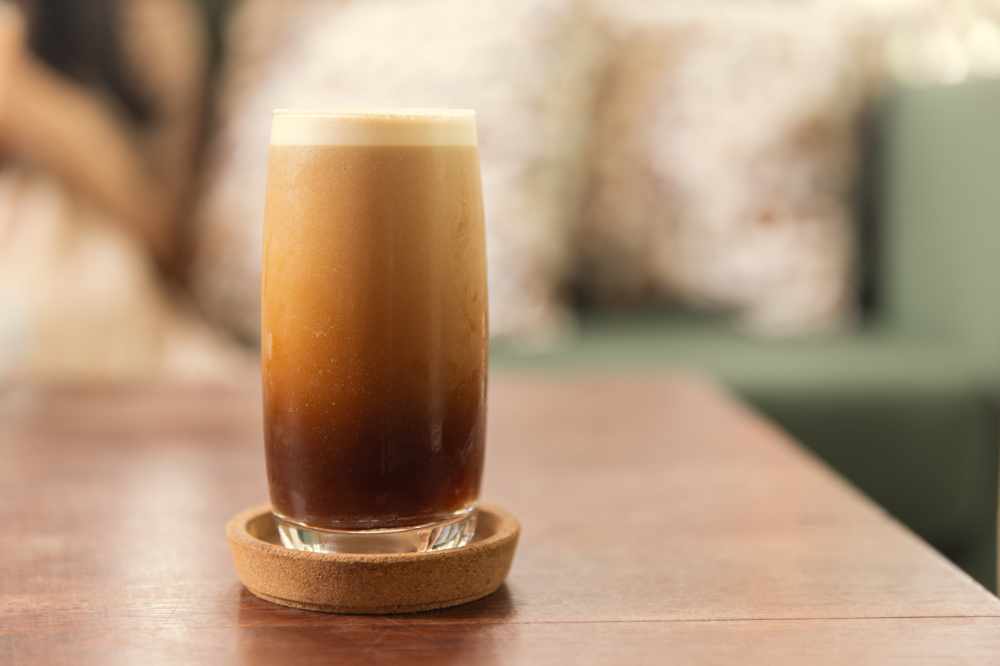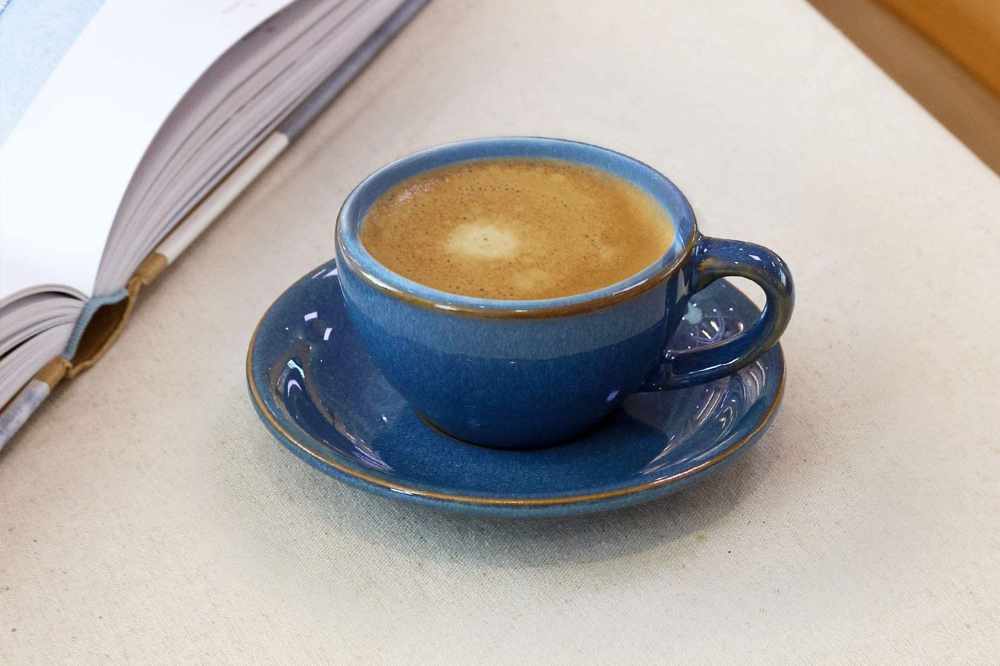We have had the honor of getting to try a truly unique kind of coffee bean that, until recently, was only really available in Japan and a few other areas of Asia.
Produced by Kei Nishida, founder of Japanese Coffee Co, these unique coffee beans are known as Sumiyaki coffee beans. In other words, these are charcoal roasted coffee beans.
We got our hands on two different bags of Sumiyaki coffee beans from Japanese Coffee Co. The first was named Mandheling Berkat Lintong G1, a single origin from Indonesia. The second was named Quattro Mountain Blend.

You can get 10% off any purchase at Japanese Coffee Co when you use the discount code ABOVEAVERAGE.
What is Sumiyaki Coffee?
Sumiyaki coffee literally translates to charcoal roasted in English. Sumiyaki coffee is simply coffee that has been roasted using binochtan charcoal.
If you like your coffee dark, syrupy, and smoky then charcoal roasted coffee could be perfect for you.
Sumiyaki is a hidden gem of the coffee world that has been nestled around Japan and parts of Asia since 1933.
Japan is renowned for its brilliant tea, so it only makes sense that Japan also produces some amazing coffee.

Roasting coffee with charcoal takes much longer than typical roasting methods because the temperatures do not go as high. Although, as with smoking meats with charcoal, roasting coffee low and slow results in a delightfully rich, flavorful, and smoky brew.
It’s a unique style of coffee that, until recently, was only really available in Japan. Kei Nishida at Coffee Roasting Co has loved Sumiyaki coffee for years and has fond memories of enjoying the unique Sumiyaki coffee at a Kissaten (Japanese coffee shop) with his mother.
After making an April Fools Joke to subscribers of his Japanese Green Tea Co mailing list, Kei received an overwhelmingly positive response to the idea of Japanese coffee. That got him thinking of how he could bring charcoal roasted, Sumiyaki, coffee to the rest of the world; not just Japan.
What’s Different About Charcoal Roasted Coffee?
Roasting coffee with charcoal is a notably different physical process to typical coffee bean roasting.
Charcoal heats coffee beans with two physical processes. The first is the one we all know and expect; radiant heat, just as is with typical coffee roasting.
Radiant heat will heat with coffee beans from the outside in.
The second physical process is with far infra-red rays. Burning charcoal emits far infra-red rays. This form of light serves to penetrate deep inside the coffee beans, heating them from the inside out.
So with charcoal roasting, the coffee beans are both being heating from the inside out and the outside in. Unlike typical coffee resting which is just heating from the outside in.
With heat managing to evenly heat the coffee beans throughout, it produces a lovely fluffy-like texture in the final roasted bean.
Evenly heating the beans also ensures that excess moisture is completely removed from the beans. Excess moisture would result in an unpleasant smell and acidity.
Roasting coffee with bintochan coffee is no easy task. It takes years of practice and skill to get it just right. With such honed skill being needed to produce these delicious coffee beans, it’s no wonder why they’re such a luxury and privilege to try.

The Taste Testing – A Cupping
We received two bags of different beans. The first was named Mandheling Berkat Lintong G1, a single origin from Indonesia. The second was named Quattro Mountain Blend.
To truly give these charcoal roasted coffee beans a fair trial, we decided to use three different classic coffee brewing methods on both of the different beans.
Up first, in keeping with the Japanese theme, we started with pour over. Second, we opted for immersion brewing to contrast with the pour-over; so it was time for the trusty French Press to shine.
Third, and final, we fired up the mighty espresso machine to really try the widest angles of the coffee brewing spectrum upon these beans.
To help make it as fair of a comparison as possible, both the pour-over and french press were brewed with a 1:15 coffee to water ratio. The espresso took 12g of beans to make a standard, 2 oz, double shot.

The First Bag: Mandheling Berkat Lintong G1, a single origin from Indonesia
The Beans Themselves – Pre-Brewed
On first opening the bag, the beans have the strong aroma of dark chocolate and biscuit. With undertones of caramel and red berry, marred with a creamy hint, somewhat like milk chocolate.
Upon pouring out the Mandheling Berkat Lintong beans, I was amazed at how dark the roast was. I may have never seen darker, oilier, coffee beans before.
When these beans were ground, the dark chocolatey and biscuity aromas were accompanied by a lovely waft of creamy vanilla.
Pour Over

Pour over is a brilliant brew method for accentuating the lighter, sweeter, more delicate flavors of a coffee bean, and it was certainly no different here.
The pour over brew had a strong scent of red berries and berries and smoke.
That smokiness was pleasantly present in the taste too. Accompanied by hints of burnt caramel and bitter red berries; the Mandheling Berkat Lintong beans were a fine balance of sweetness and darkness, married by a presence of smooth vanilla.
French Press
Immersion brewing methods such as French Press are brilliant at bringing out the darker flavors in any coffee bean.
The sweeter tones which were very much present when made as a pour over gave way to darker, earthier, flavors. Like burnt bonfire meat. While the sweeter tang took a backseat, the smokiness remained just as present to marry all the darker tones together.
As we were trying a lot of coffee at once with this taste testing, we couldn’t finish each cup or be wired to the moon. So leftovers were chilled in the fridge overnight. It was interesting to note that when chilled, this brew took on more of a vanilla ice cream flavor.
Espresso

Of course, being such oily beans, they were perfect for making an amazing espresso with a lovely thick and fluffy crema.
It turned out smooth and creamy with a dark chocolate aftertaste. There was an almost licorice-like complexity in the flavor.
The caffeine certainly did hit hard with these beans, which is odd for a dark roast. Usually, a dark roast would have less caffeine. Although these were charcoal roasted, charcoal burns at a lower temperature than coffee beans are traditionally roasted; so perhaps the charcoal roasting has the result of getting a really dark roast without breaking down caffeine with high temperatures.
The Second Bag: Quattro Mountain Blend
The Beans Themselves – Pre-Brewed
The Quattro Mountain Blend was, yet again, a lovely bag of very dark and oily coffee beans. Not quite as oily as the Mandheling Berkat Lintong beans, but still a very oily bean nonetheless.
The aroma from these beans was all about the darker notes. Woodsmoke, dark chocolate, accompanied by a lovely undertone of dried grass or hay. Like a sweet summer grass smell.
Pour Over
Brewing the Quattro Mountain Blend as a pour over brew gave a hearty bloom. A welcome sign of some really fresh beans.
The finished pour over brew had quite a minimal aroma, just of gentle smoke. However, the flavor made itself very known on the first sip.
Whisky-like flavors with gentle hints of red berry, accompanied by that familiar smokiness that Sumiyaki beans are famous for.
The Quattro Mountain Blend prepared as a pour over brew produced a gentle, yet flavorful, easy drinker. This is an ideal brew for a lazy Sunday morning.
French Press

Yet again, the French Press brew brought a really hearty bloom from the Quattro Mountain Blend.
Unusual for a french press brew, it was notably similar to the pour over brew. There was minimal aroma, with a delicious and gentle flavor.
There was certainly a more notable mouthfeel to each sip, however, it was still light and smooth. Again, a lovely easy-drinker.
Espresso
Again, as was to be expected with a lovely dark and oily bean such as the Quattro Mountain Blend, it produced an amazing espresso.
The crema was delightfully thick like someone had dropped a dollop of whipped coffee cream on top.
The espresso had a brilliantly well-rounded flavor. In my opinion, this was an espresso that many dream of producing, but just haven’t found the right beans. Well, these are the right beans!
Not at all bitter with a gently sweet aftertaste, this was one all-round great espresso to rival the pros.
Final Thoughts

In roasting coffee beans with charcoal, you receive a unique bean that takes on far more qualities than just a dark smokiness. This roasting method is physically roasting the beans notably differently from typical roasting.
With the charcoal emitting both far infra-red rays to heat the bean from the inside, as well as simply producing radiant heat to roast them from the outside in; the beans are roasted far more evenly throughout. This isn’t just some hand-wavy science, the different roasting process absolutely shows.
In my opinion, charcoal roasted, Sumiyaki, coffee beans absolutely steal the show when it comes to espresso. With a lovely thick crema, zero unpleasant bitterness, and delightfully well-rounded flavors accompanied by a warming smokiness; it’s a tough one to beat.
You can get 10% off any purchase at Japanese Coffee Co when you use the discount code ABOVEAVERAGE.
Related Reading
Caprissimo Coffee Bean Review (Friendly Beans from Coffee Friend)





